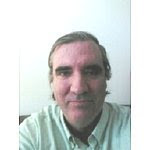 John Hasbrouck van Vleck was born on March 13, 1899 in Middletown, Connecticut. Both his father and grandfather were university professors. Van Vleck, an only child, moved with his parents to Wisconsin when he was seven when his father became a professor at the University of Wisconsin. He was educated in the Madison, Wisconsin public schools and went on to the University of Wisconsin, where he played in the band. His undergraduate education included courses on railroads and French literature, in addition to physics. Although not an athlete, he was a fan of American football, remembering the scores of games years after they had been played. He graduated in 1920 with a degree in physics. He entered the graduate program at Harvard University and graduated with a Ph.D. in 1922 completing a thesis on the binding energy of a helium atom.
John Hasbrouck van Vleck was born on March 13, 1899 in Middletown, Connecticut. Both his father and grandfather were university professors. Van Vleck, an only child, moved with his parents to Wisconsin when he was seven when his father became a professor at the University of Wisconsin. He was educated in the Madison, Wisconsin public schools and went on to the University of Wisconsin, where he played in the band. His undergraduate education included courses on railroads and French literature, in addition to physics. Although not an athlete, he was a fan of American football, remembering the scores of games years after they had been played. He graduated in 1920 with a degree in physics. He entered the graduate program at Harvard University and graduated with a Ph.D. in 1922 completing a thesis on the binding energy of a helium atom.After his doctorate he stayed at Harvard for a year teaching, before taking a job at the University of Minnesota, where he taught graduate physics courses from 1923-1928 He returned to teach at his alma mater, the University of Wisconsin from 1928-1934 and he taught at Harvard from 1934-1969. During World War II he worked on radar at the MIT Radiation Laboratory and participated in the Manhattan Project as part of a committee, with J. Robert Oppenheimer, that studied the feasibility of and designed the first atomic bombs. He also served on the Los Alamos Review Committee, which designed the firing mechanism for "Little Boy", the first atomic bomb used on Hiroshima, Japan.
Van Vleck's early research delt with diamagnetic and paramagnetic materials, and how their behavior could be understood when the new (at the time) field of quantum mechanics was applied. Paramagnetic materials, when exposed to an external magnetic field, are attracted to it, diamagnetic materials are slightly repelled. Neither of the materials retain a magnetic field when the external field is removed. The reason for these behaviors is the electron structures of the different materials, paramagnetic materials have unpaired electrons and diamagnetic do not. Van Vleck also worked on crystal field theory, a branch of chemistry that has to do with the complexes formed by transition metals. He showed that ligands (the atoms or groups of atoms that bond to transition metals) form covalent bonds, not just ionic bonds, with the central metal atom.
In 1977 van Vleck, along with Philip Anderson and Sir Nevil Mott, was awarded the Nobel Prize for Physics "for their fundamental theoretical investigations of the electronic structure of magnetic and disordered systems". Other awards won by van Vleck include the National Medal of Science in 1966 and the Lorentz Medal from the Royal Netherlands Academy of Arts and Sciences in 1974.
Van Vleck retired in 1969 and died in his Cambridge, Massachusetts home on October, 27 1980.
References:
Anderson, P.W.; "John Hasbrouk Van Vleck"; in Biographical Memoirs Vol. 56; National Academy Press; 1987
Carey, Charles W.; American Scientists; Infobase Publishing; 2006
John H. Van Vleck Nobel Autobiography
John Hasbrouck Van Veck Wikipedia Entry
 Joseph von Fraunhofer was born on March 6, 1887 in Straubing, Bavaria. He was the youngest of eleven children of a poor glazier. As soon as he was of age, he began an apprenticeship under his father. His mother died when he was ten and his father when he was eleven, leaving him an orphan. Leaving his home he became the apprentice of Philipp Anton Weichelsberger, the court mirror and glass maker. Weicheslberger was a harsh master and did not allow young Fraunhofer time to study and read.
Joseph von Fraunhofer was born on March 6, 1887 in Straubing, Bavaria. He was the youngest of eleven children of a poor glazier. As soon as he was of age, he began an apprenticeship under his father. His mother died when he was ten and his father when he was eleven, leaving him an orphan. Leaving his home he became the apprentice of Philipp Anton Weichelsberger, the court mirror and glass maker. Weicheslberger was a harsh master and did not allow young Fraunhofer time to study and read.